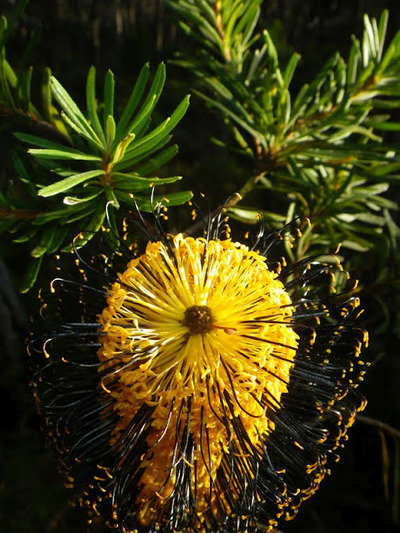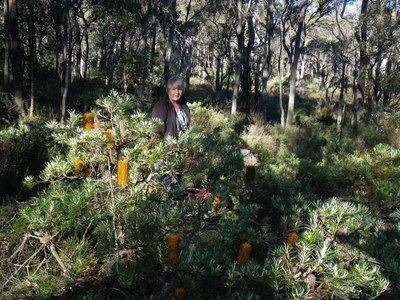Botany student proves ‘New England Banksia’ a distinct species
Research by Margaret Stimpson, a postgraduate student of botany at the University of New England (UNE), has given the New England region its very own species of banksia: Banksia neoanglica.
Stimpson’s research has raised this flowering plant, until now classified as a variety of the Hairpin Banksia (B. spinulosa), to the taxonomic level of a distinct species.
The evidence she presented was so compelling that her paper for the online international journal PhytoKeys was accepted and published in about two months. Her name will be forever associated in the taxonomic literature with that of the species she established - ‘the New England Banksia’, B. neoanglica Stimpson & J.J. Bruhl.

The New England Banksia is largely restricted to the eastern edge of the New England Tableland and is common in places along Waterfall Way.
“I love the Proteaceae - the family of flowering plants that includes the banksia and grevillea genera in Australia and protea in South Africa,” Stimpson said. “Surprisingly, molecular evidence in recent years has shown the family’s closest relatives are the Sacred Lotus and the plane trees. Species of banksia survive in poor soil and still manage to produce marvellous flowers.”
Her definitive publication, ‘First instalment in resolution of the Banksia spinulosa complex (Proteaceae): B. Neoanglica, a new species supported by phenetic analysis, ecology and geography’, is available here.
She wrote the paper in collaboration with Ian Telford, the Curator of the NCW Beadle Herbarium at UNE; Professor Jeremy Bruhl, the Director of the NCW Beadle Herbarium and an international specialist in Proteaceae systematics; and Dr Peter Weston, Senior Principal Research Scientist at the National Herbarium of NSW.
Stimpson’s first project as an undergraduate student of botany at UNE was on the Proteaceae, and she’s been collecting specimens ever since. Now working towards enrolling in a doctoral degree program, she said: “There’s a whole heap of banksias out there that I believe are entitled to species rank, although people have been trying to lump them together for the past 200 years. This initial success has made me hungry to solve these problems before I finish my PhD.”

She established the species rank of the New England Banksia by detailed studies of its leaves, flowers, stem and fruit, and considerations of its ecology and distribution. She explained that it has two growth forms, the more common being a multistemmed small shrub with many flowers but few seeds. This form occurs where there has been regular burning, and the seeds need exposure to fire to open. The less common form, found where burning has not occurred, is a single-stemmed tree with many flowers and many seeds that open spontaneously without exposure to fire.
Colon cancer DNA in blood can guide chemo decisions
A simple blood test could change how doctors decide which patients with colon cancer need...
Non-invasive blood test helps rule out oesophageal cancer
Designed and developed in Australia, the PromarkerEso test is designed to offer a quick,...
Taste-based flu test enables rapid diagnosis
The diagnostic tool consists of the sensor molecule thymol and a virus-specific sugar building...



